#Paulus Potter
Text
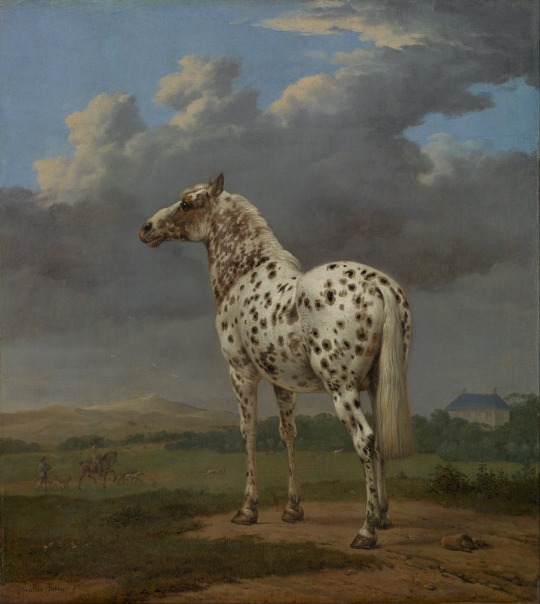
The Piebald Horse | The Spotted Stallion in a Hilly Landscape
by Paulus Potter
243 notes
·
View notes
Text
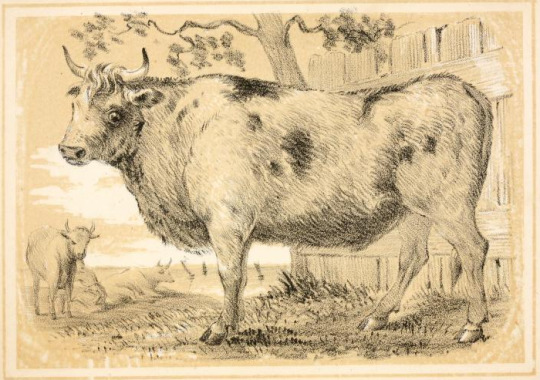
The Alphabetical Drawing Book and Pictoral Natural History. Published in 1847. Illustration by Paulus Potter (1625-1654).
Internet Archive
346 notes
·
View notes
Text
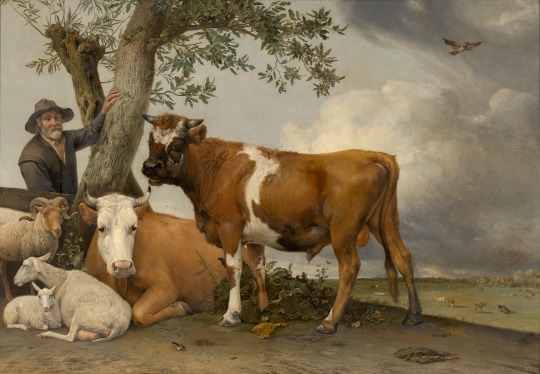
Paulus Potter
44 notes
·
View notes
Photo

The young bull, 1647, Mauritshuis, The Hague, Netherlands - by Paulus Potter (1625 - 1654), Dutch
73 notes
·
View notes
Text
Paulus Potter, Two Cows and a Young Bull, 1647
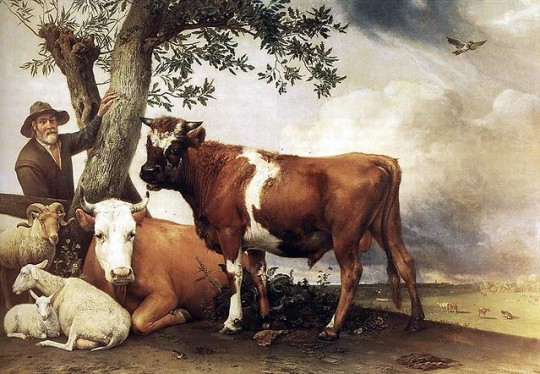
Potter, Paulus, 1625–1654
Dutch painter and etcher of animals in landscapes, active in Delft, The Hague, and Amsterdam.
2 notes
·
View notes
Text

مؤطَّراً بالغيوم العاصفة الفائرة، يقف حصان رمادي مرقط وهو يدير رأسه قليلاً في إشارة إلى يقظته لما يحيط به. جسّد باولوس بوتر، أفضل رسام هولندي للحيوانات في عصره، الحصان بإهتمام شديد بالتفاصيل الجسدية كالسطح الأملس اللامع لمعطفه وعرفه، وعينه التي تحمل هذا البريق المائي، والخطوط الأنيقة الرشيقة التي ترسم جسم الحصان. ولم يكتف بذلك بل صبغ الفنان الحصانَ بشخصية متفردة تجمع ما بين الجموح والحساسية العالية. وبالفعل يبدو الحصان وكأنه يستجيب لصوت صيد يأتي من مكان ليس ببعيد.
معنى اللوحة يحتمل شقين. من المحتمل أن تكون صورة شخصية للحصان، كُلّفت من مالك البيت الريفي على يمين اللوحة. قد يشير التركيز على إظهار هذا الحيوان الأليف بهذا القرب، إلى مشاعر الفخر بالملكية التي تتملك صاحب أرض هولندي ثري بسبب حيازته لمثل هذه الدابة. ومن ناحية أخرى، فإن الحصان حر القيود ويبدو طليقاً في تجواله. لذا قد تشير حلاقته المرتبة وموقعه أمام الحقول المزروعة، ضمناً إلى أن مصدر الازدهار الهولندي يكمن في السيطرة التي إستطاع البشر ممارستها على الطبيعة الغاشمة.
The "Piebald" Horse
Paulus Potter
1650-1654
1 note
·
View note
Photo

Kuehe auf einer Wiese in der Naehe eines Bauernhofes, 1653von Paulus PotterÖl auf Leinwand, 1653Rijksmuseum, Amsterdam, The Netherlands
#Paulus Potter#landschaft#landschaftsmalerei#kunst#gemälde#meisterwerk#kunstdruck#museum#galerie#kunstwerk#alte meister
3 notes
·
View notes
Text
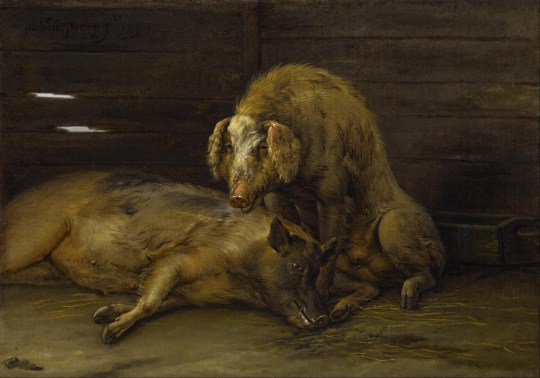
19 notes
·
View notes
Photo
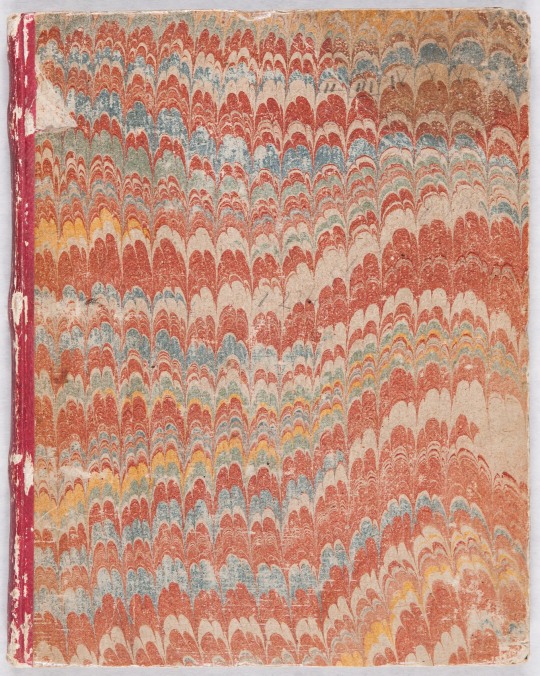
Marcus de Bye after Paulus Potter
The Leopard [complete set, bound], 1653
341 notes
·
View notes
Text

Dutch painter, Paulus Potter, was born on this day 1625.
Potter specialised in the depiction of animals in landscape and farmyard scenes. His chief source of inspiration was Pieter van Laer, who made a series of etchings of domestic animals in 1636.
This painting, titled The Milkmaid, was created in 1646. While describing farm workers and their animals with great care, Potter has emphasised the close connection of his subjects to the earth and has given them an aura of heroic grandeur. A sense of monumentality has been created by the low viewpoint, accentuating the size of the animals and the milkmaid.
6 notes
·
View notes
Text

Rosa Bonheur (French painter and sculptor) 1822 - 1899
The Forlorn Donkey, ca. 1881
oil on paper laid down on canvas
35.7 x 25.5 cm. (14.25 x 10 in.)
signed 'Rosa Bonheur' (lower right)
private collection
© photo Christie's
Rosa Bonheur made another version of this donkey, Head of a Donkey, 1881, oil on panel, 29.5 x 25 cm.
* * *
Rosa Bonheur was a French animalière, realist artist, and sculptor. As a painter she became famous primarily for two chief works: Ploughing in Nevers and The Horse Fair (in French: Le marché aux chevaux) (which was exhibited at the Salon of 1853 (finished in 1855) and is now in the Metropolitan Museum of Art, in New York City. Bonheur is widely considered to have been the most famous female painter of the nineteenth century.
Bonheur was born in Bordeaux (where her father had been friends with Francisco Goya who was living there in exile) but moved to Paris in 1828 at the age of six with her mother and brothers, her father having gone ahead of them to establish a residence and income. By family accounts, she had been an unruly child and had a difficult time learning to read. To remedy this her mother taught her to read and write by having her select and draw an animal for each letter of the alphabet. To this practice in the company of her doting mother she attributed her love of drawing animals.
Although she was sent to school like her brothers, she was a disruptive force in the classroom and was consequently expelled from numerous schools. Finally, after trying to apprentice her to a seamstress Raimond agreed to take her education as a painter upon himself. She was twelve at that point and would have been too young to attend the École des Beaux-Arts even if they had accepted women.
As was traditional in the art schools of the period, Bonheur began her artistic training by copying images from drawing books and by sketching from plaster models. As her training progressed she began to make studies of domesticated animals from life, to include horses, sheep, cows, goats, rabbits and other animals in the pastures on the perimeter of Paris, the open fields of Villiers[disambiguation needed] and the (then) still-wild Bois de Boulogne. At age fourteen she began to copy from paintings at the Louvre. Among her favorite painters were Nicholas Poussin and Peter Paul Rubens, but she also copied the paintings of Paulus Potter, Porbus, Louis Léopold Robert, Salvatore Rosa and Karel Dujardin.
She also studied animal anatomy and osteology by visiting the abattoirs of Paris and by performing dissections of animals at the École nationale vétérinaire d'Alfort, the National Veterinary Institute in Paris. There she prepared detailed studies which she would later use as references for her paintings and sculptures. During this period, too, she also met and became friends with the father and son comparative anatomists and zoologists Étienne Geoffroy Saint-Hilaire and Isidore Geoffroy Saint-Hilaire by whom her father was employed to create natural history illustrations.
Rosa Bonheur received a French government commission which led to her first great success, Ploughing in the Nivernais, exhibited in 1849. Her most famous work was the monumental Horse Fair, completed in 1855, which measured eight feet high by sixteen feet wide. Its subject is the horse market held in Paris on the tree-lined boulevard de l’Hôpital, near the Pitié-Salpêtrière Hospital, visible in the background on the left. It led to international fame and recognition and that same year she travelled to Scotland, "en route" meeting Queen Victoria, who admired her work, and where she completed sketches for later works including A Scottish Raid, completed in 1860, and Highland Shepherd. These were anachronistic pieces as they depicted a way of life in the Scottish highlands that had disappeared a century earlier. Nonetheless, they had enormous appeal to Victorian sensibilities. She was especially popular in England, though less so in her native France. In France she was decorated with the Legion of Honour by the Empress Eugenie and was promoted to officer of the order.
She was represented by private art galleries, and in particular that of Ernest Gambart (1814–1902), who would purchase the reproduction rights to her work and sell engraved copies of her paintings. It was Gambart who brought Bonheur to the United Kingdom in 1855. Many engravings were created by the skillful Charles George Lewis (1808–1880), one of the finest engravers of his day. Gambart sold through his gallery in London's Pall Mall.
Due to a tendency in 1980s-1990s academic criticism to locate Bonheur as a proto-Feminist and as a pivotal figure for Queer theory, she is perhaps most famous today because she was known for wearing men's clothing and living together with Anna Klumpke. Her work and artistic talent has now become somewhat secondary in importance to her manner of dress, her choice of companions and her penchant for smoking cigarettes. On her wearing of trousers, she said at the time that her choice of attire was simply practical as it facilitated her work with animals: "I was forced to recognize that the clothing of my sex was a constant bother. That is why I decided to solicit the authorization to wear men's clothing from the prefect of police. But the suit I wear is my work attire, and nothing else. The epithets of imbeciles have never bothered me...." She lived for over forty years with her childhood friend Nathalie Micas. In the final year of her life she became close with Anna Klumpke, the author of her "autobiography". She died at the age of 77, at Thomery (By), France. Many of her paintings, which had not previously been shown publicly, were sold at auction in Paris in 1900.
Source: Wikipedia
6 notes
·
View notes
Photo
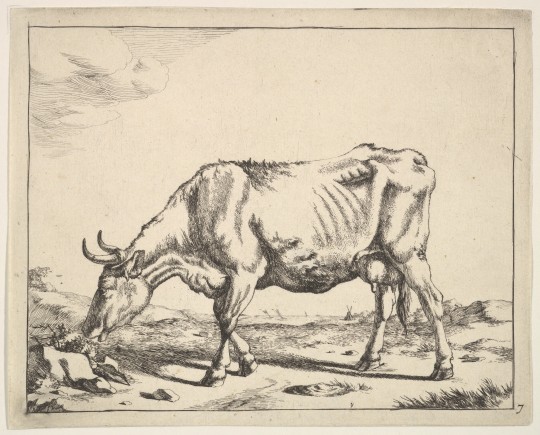
Cow, after Paulus Potter. . Credit line: Bequest of Phyllis Massar, 2011 https://www.metmuseum.org/art/collection/search/399435
#aesthetic#art#abstract art#art museum#art history#The Metropolitan Museum of Art#museum#museum photography#museum aesthetic#dark academia
1 note
·
View note
Text
A Guide to Must-See Masterpieces at Rijksmuseum
Happy birthday! I'd be delighted to help you explore the Rijksmuseum tickets and its must-see masterpieces. The Rijksmuseum tours in Amsterdam is a treasure trove of Dutch art and history, featuring works from the Middle Ages to the present day. Here's a guide to some of its most iconic pieces:
The Night Watch (De Nachtwacht) by Rembrandt van Rijn:
This colossal painting is one of Rembrandt's most famous works. It depicts a group of city guardsmen, with dynamic use of light and shadow.
The Milkmaid (Het Melkmeisje) by Johannes Vermeer:
Vermeer's intimate portrayal of a maid pouring milk is a masterpiece of Dutch genre painting. The subtle play of light and meticulous details make it captivating.
The Jewish Bride (Het Joodse Bruidje) by Rembrandt van Rijn:
This intimate and emotive portrait by Rembrandt showcases his ability to capture the deep emotions of his subjects, in this case, a tender moment between a couple.
The Anatomy Lesson of Dr. Nicolaes Tulp by Rembrandt van Rijn:
This painting depicts a public dissection and is a prime example of Rembrandt's mastery in portraying human anatomy and capturing dramatic moments.
The Kitchen Maid (De Keukenmeid) by Johannes Vermeer:
Another Vermeer gem, this painting showcases his ability to elevate ordinary scenes into extraordinary moments. The play of light and shadow on the kitchen maid's face is exquisite.
The Threatened Swan by Jan Asselijn:
This painting captures a moment of intense drama, depicting a swan protecting its nest against a dog. The symbolism and composition make it a striking piece.
The Merry Drinker (De vrolijke drinker) by Frans Hals:
Frans Hals was known for his lively and expressive portraits. "The Merry Drinker" is a wonderful example of his skill in capturing the energy and spirit of his subjects.
The Bull by Paulus Potter:
"The Bull" is a masterpiece of animal painting. Paulus Potter's attention to detail and the realistic rendering of the bull make it a standout piece in the collection.
The Syndics (De Staalmeesters) by Rembrandt van Rijn:
This group portrait of Amsterdam cloth merchants is a testament to Rembrandt's ability to capture the personalities of his subjects and his mastery in portraying fabrics and textures.
Winter Landscape with Ice Skaters by Hendrick Avercamp:
Avercamp's winter scenes are celebrated for their detailed depictions of winter activities. This painting provides a glimpse into 17th-century Dutch life during the winter months.
Remember to check the museum's schedule, as some pieces might be on loan or temporarily removed for restoration. Enjoy your visit to the Rijksmuseum!
0 notes
Text
Holidays 11.20
Holidays
Absurdity Day
Africa Industrialization Day (a.k.a. Ban Ki-Moon; UN)
Air Your Dirty Laundry Day
Automatic Traffic Light Day
Beautiful Day
Black Consciousness Day (a.k.a. Dia da Consciencia; Brazil)
Blade Runner Day
Caregiver Rights Day (UK)
Clean the Cat Hair Out of the Vacuum Cleaner Day
Day of Friendship (Aysellant)
False Confession Day
Flag Day (UK)
Future Teachers of America Day
Give Your Computer a Name Day
G.O.H.A.R.D. (Globally Organized Hug A Runner Day)
Microsoft Windows Day
mRNA Day (California)
Name Your PC Day
National Absurdity Day
National Child Day (Canada)
National Flower Day
National Gary Day
National Headwrap Day
National Kick a Ginger Day
National Lucia Day
National Oscar Day
National Pay Back Your Parents Day
Ngày nhà giáo (Teacher’s Day; Vietnam)
Nuremberg Trials Anniversary Day
Parsnip Day
Public Health Thank You Day
Roller Day (French Republic)
Royal Thai Navy Day (Thailand)
SETI Day (Search for Extraterrestrial Intelligence)
Teacher’s Day (Vietnam)
Transgender Day of Remembrance
Traffic Light Day
20-N (Spain)
Type 1 Diabetes Day (New Jersey)
Vertical Marathon Day (Singapore)
Warriors’ Festival (Elder Scrolls)
World Children's Day (UN)
World Day of Prayer & Action for Children
World Piles Day
World Television Day (Aleutian Islands)
Writing On the Wall Day
Zumbi Day (Brazil)
Food & Drink Celebrations
Mallomar Day
National Peanut Butter Fudge Day
3rd Monday in November
American Education Day [3rd Monday]
Anchor Christmas Ale Day [Monday before Thanksgiving]
Learn When to Start Thawing the Turkey Day [Monday before Thanksgiving]
National Day of the Bible [Monday before Thanksgiving]
National Military Families Recognition Day [Monday before Thanksgiving]
Odd Socks Day [3rd Monday]
Revolution Day (Mexico) [3rd Monday]
Independence Days
National Sovereignty Day (Argentina)
Feast Days
Abdul Aziz Day (Church of the SubGenius; Saint)
Agapius (Christian; Saint)
Ambrose Traversari (Christian; Saint)
Ampelus and Caius (Christian; Saint)
Anacleto González Flores, José Sánchez del Río, and companions (Christian; Martyrs of Cristero War)
Bartolomeo Pinelli (Artology)
Bernard of Hildesheim (Christian; Saint)
Carista (A Day of Peace in the Family; Pagan)
Dasius of Durostorum (Christian; Saint)
Day of Sekhmet and the Purifying Flame (Egyptian Warrior Goddess)
Edmund the Martyr (Christian; Saint)
Felec (a.k.a. Felix) of Cornwall (Christian; Saint)
The Gonk (Muppetism)
Gregory of Dekapolis (Christian; Saint)
Humbert (Christian; Saint)
Josaphata Hordashevska, Blessed (Ukrainian Greek Catholic Church)
Maxentia (Christian; Saint)
Paulus Potter (Artology)
Praetexatus and Paulina's Day (Guardians of the Eleusinian Mysteries)
Say No To Cannibalism Day (Pastafarian)
Solutor, Octavius, and Adventor (Christian; Saints)
Sully (Positivist; Saint)
Theonestus of Vercelli (Christian; Saint)
Lucky & Unlucky Days
Fortunate Day (Pagan) [47 of 53]
Taian (大安 Japan) [Lucky all day.]
Very Unlucky Day (Grafton’s Manual of 1565) [53 of 60]
Premieres
Around the World, by the Police (Live Album; 2022)
Auld Lang Syne, recorded by Guy Lombardo and his Royal Canadians (Song; 1939)
Blue Monday, by New Order (12-Single; 1983)
Boris Bites Back or A Rebel Without a Pause (Rocky & Bullwinkle Cartoon, S2, Ep. 74; 1960)
Boris Bounces Back or The Rubber Heel (Rocky & Bullwinkle Cartoon, S4, Ep. 180; 1962)
A Bug’s Life (Film; 1998)
Bullwinkle’s Rise of This Goon for Higher (Rocky & Bullwinkle Cartoon, S2, Ep. 73; 1960)
The Children's Hour, by Lillian Hellman (Play; 1934)
Crocodile Rock, by Elton John (US Song; 1972)
Daffy Duck’s Thanks-for-Getting Special (Animated TV Special; 1980)
The Day After (TV movie; 1983)
De DoDoDo, De Da Da Da, by the Police (Song; 1980)
Deep Sea Skiving, by Bananarama (Album; 1983)
The Dixie Jass Band One Step, by the Original Dixieland Pass Band (Song; 1917) [1st Jazz Record]
The Duxorcist (WB LT Cartoon; 1987)
Fidelio, by Ludwig van Beethoven (Opera; 1805)
Get a Job, by The Silhouettes (Song; 1957)
Go Go Amigo (WB MM Cartoon; 1965)
Happy Days Are Here Again, recorded by Leo Reisman (Song; 1929)
Hawaii, by James A. Michener (Novel; 1959)
Highlander (Film; 1986)
Howl’s Moving Castle (Animated Film; 2004)
The Hunger Games: Mockingjay — Part 2 (Film; 2015)
If Anything Happens I Love You (Short Animated Film; 2020)
Jessica Jones (TV Series; 2015)
The Last Emperor (Film; 1987)
The Life Aquatic with Steve Zissou (Film; 2004)
Little Town on the Prairie, by Laura Ingalls Wilder (Novel; 1941)
The Looney Looney Looney Bugs Bunny Movie (WB Cartoon Compilation Film; 1981)
Malcolm X (Film; 1992)
Mirror (Film; 1975)
M!ssundaztood, by Pink (Album; 2001)
Mr. Peabody & Sherman (Animated Film; 2014)
One Flew Over the Cuckoo’s Nest (Film; 1975)
Planet 51 (Animated Film; 2009)
Prelude for War, by Leslie Charteris (Novel; 1938) [Saint #20]
The Rugrats Movie (Animated Film; 1998)
Sailor Moon (Anime TV Series; 1992)
Shadow of the Condor (Animated TV Show;Jonny Quest #10; 1964)
Spring Awakening, by Frank Wedenkind (Play; 1906)
Symphony No. 1, “The Titan,” by Gustav Mahler (Symphony; 1889)
Underwater Trap or No Air in the Snare (Rocky & Bullwinkle Cartoon, S4, Ep. 179; 1962)
Waking Ned Devine (Film; 1998)
We Are the World, by Lionel Richie, Michael Jackson and many others (Song; 1985)
Young Americans, by David Bowie (Album; 1975)
Today’s Name Days
Bernward, Edmund, Korbinian (Austria)
Edmund, Oktavije, Silvestar, Zlatan, Zlatko (Croatia)
Nikola (Czech Republic)
Volkmarus (Denmark)
Helmar, Helmer, Helmo, Helmu, Helmur, Helmut (Estonia)
Jalmari, Jari (Finland)
Edmond, Octave (France)
Corbinian, Edmund, Elisabeth, Felix, Korbinian (Germany)
Denahis (Greece)
Jolán (Hungary)
Benigno, Edmondo (Italy)
Anda, Andina, Andis (Latvia)
Feliksas, Jovydas, Vaidvilė (Lithuania)
Halvdan, Helle (Norway)
Anatol, Edmund, Feliks, Jeron, Oktawiusz, Sędzimir (Poland)
Grigorie (Romania)
Félix (Slovakia)
Edmundo, Félix, Octavio (Spain)
Marina, Pontus (Sweden)
Edmond, Edmonda, Edmund, Edmunda, Octavio (USA)
Today is Also…
Day of Year: Day 324 of 2024; 41 days remaining in the year
ISO: Day 1 of week 47 of 2023
Celtic Tree Calendar: Ngetal (Reed) [Day 21 of 28]
Chinese: Month 10 (Gui-Hai), Day 8 (Ren-Wu)
Chinese Year of the: Rabbit 4721 (until February 10, 2024)
Hebrew: 7 Kislev 5784
Islamic: 7 Jumada I 1445
J Cal: 24 Mir; Threesday [24 of 30]
Julian: 7 November 2023
Moon: 50%: 1st Quarter
Positivist: 16 Frederic (12th Month) [Sully]
Runic Half Month: Nyd (Necessity) [Day 10 of 15]
Season: Autumn (Day 58 of 89)
Zodiac: Scorpio (Day 28 of 29)
0 notes

